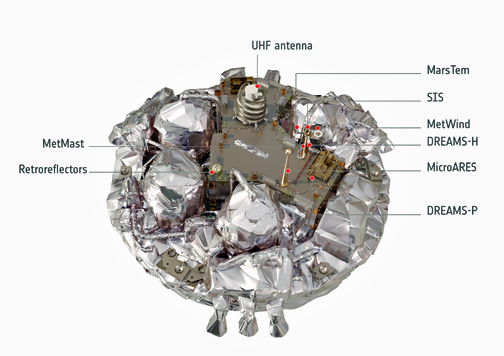
An interesting article authored by Elizabeth Gibney for Nature magazine indicates that a computer error may well have doomed the Schiaparelli Mars lander.
She writes that Jorge Vago, project scientist for ExoMars, said, "The events of 19 October may be painful for ESA scientists to recall, but they will now have to relive them over and over again in computer simulations. The lander, called Schiaparelli, was part of ESA's ExoMars mission, which is being conducted jointly with the Russian Space Agency Roscosmos. It was a prelude to a planned 2020 mission, when researchers aim to land a much larger scientific station and rover on Mars, which will drill up to 2 metres down to look for signs of ancient life in the planet’s soil. Figuring out Schiaparelli’s faults and rectifying them is a priority. That’s super important. I think it’s on everybody’s mind.”
Unlike the British-led and ESA-operated Beagle 2 mission, which disappeared during its landing on Mars on Christmas Day 2003, Schiaparelli sent data to its mother ship during its descent. Preliminary analysis suggests that the lander began the maneuver flawlessly, braking against the planet’s atmosphere and deploying its parachute. But at 4 minutes and 41 seconds into an almost 6-minute fall, something went wrong. The lander’s heat shield and parachute ejected ahead of time, said Vago. Then thrusters, designed to decelerate the craft for 30 seconds until it was meters off the ground, engaged for only around 3 seconds before they were commanded to switch off, because the lander's computer thought it was on the ground.

Illustration of Schiaparelli, without the heat shield or back cover.
Image is courtesy of ESA.
The lander even switched on its suite of instruments, ready to record Mars’s weather and electrical field, although they did not collect data. “My guess is that at that point we were still too high. And the most likely scenario is that, from then, we just dropped to the surface,” said Vago.
The craft probably fell from a height of between 2 and 4 kilometers before slamming into the ground at more than 300 kilometers per hour, according to estimates based on images of the probe’s likely crash site, taken by NASA’s Mars Reconnaissance Orbiter on October 20th.
The most likely culprit is a flaw in the craft’s software or a problem in merging the data coming from different sensors, which may have led the craft to believe it was lower in altitude than it really was, stated Andrea Accomazzo, ESA’s head of solar and planetary missions. Accomazzo says that this is a hunch; he is reluctant to diagnose the fault before a full postmortem has been carried out. But if he is correct, that is both bad and good news...
To read the entire story, please visit the Nature magazine infosite at this URL: http://www.nature.com/news/computing-glitch-may-have-doomed-mars-lander-1.20861

